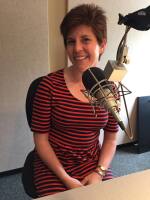It’s estimated that one in four 18-to-29-year-olds will meet the criteria for alcohol use disorder within a given 12-month period. According to the National Institute on Alcohol Abuse and Alcoholism, alcohol use disorder is defined as “the impaired ability to stop or control alcohol use despite adverse social, occupational, or health consequences."
So how do we help prevent college-aged students from developing alcohol use disorder?
Research suggests trying to end the problem before it starts! Offering fun, late night programming around campus is a powerful way for universities to provide students with an alternative to drinking.
Second, when campuses offer a clear message, anti-drinking campaigns are more effective. Competing environmental messages such as signs and advertisements for alcohol, as well as visible alcohol consumption at campus events can increase misperceptions of peer drinking.
Finally, using messaging that appeals to students’ sense of independence gives them a sense of control without feeling as though someone is directly telling them “no”. This strategy could prevent students from feeling targeted or dared, which then minimizes the risk of setting off defensive reactions toward persuasive health messaging.
By helping to stop alcohol abuse before it starts, universities are saving lives. It’s estimated that about 1,800 college students die from alcohol-related injuries and accidents every year.
Resources:
https://www.niaaa.nih.gov/publications/brochures-and-fact-sheets/college-drinking
https://www.collegedrinkingprevention.gov/
Hanke, E. (2020). When drinking becomes a problem: Alcohol misuse and abuse in College.
New Directions for Student Services, 2020(170), 23–36.
McBride, N. M., Barrett, B., Moore, K. A., & Schonfeld, L. (2014). The Role of Positive Alcohol
Expectancies in Underage Binge Drinking Among College Students. Journal of American
College Health, 62(6), 370–379.
Content for this segment was created by Lexi Ross as part of a project for EA615: Wellness in Higher Education, taught by Dr. Clubbs. She received her Bachelor of Science in Management: Personnel Management and Bachelor of Science in Marketing in December 2017. She is currently pursuing her Master of Arts in Higher Education Administration and a Graduate Certificate in Trauma and Resiliency Studies, with an anticipated graduation date of May 2023. Her future career goal is to be a professional academic advisor.



